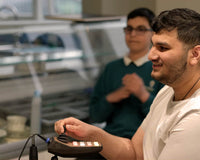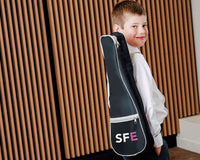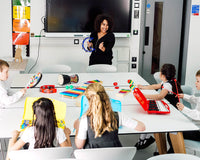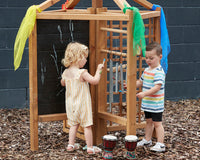Introduction
The integration of musical instruments into the broader educational curriculum offers a wealth of opportunities for enriching the learning experience. Here we explore the various ways in which musical instruments can be used to enhance cross-disciplinary learning, from mathematics to history and beyond.
The Building Blocks of Curriculum Integration Through Music
The Role of Music in Education
Music is not just an art form; it's a powerful educational tool that can support academic development. Studies have shown that arts-integrated teaching methods are as effective, if not more so, than conventional methods in helping students retain content. Teachers can integrate music into instruction to engage students and enrich content, adding an auditory channel to primarily visual tasks.
The Components of Musical Integration
The systematic integration of musical instruments into the curriculum involves several key components:
1. Educational Objectives: Clearly define what you aim to achieve academically through the use of musical instruments.
2. Selection of Instruments: Choose instruments that are accessible and appropriate for the age group and subject matter.
3. Lesson Planning: Develop coherent lesson plans that incorporate musical elements in a meaningful way.
4. Assessment: Establish metrics to evaluate the effectiveness of the musical integration.

Strategies for Cross-disciplinary Learning
Making Maths Memorable
Maths teachers can assign music projects where students write lyrics incorporating maths vocabulary words. For example, using drums and time signatures to teach rhythm can also help students understand fractions and ratios.
Exploring the Context of Historical Songs
Historical songs can evoke emotions, values and social issues of a past time. Teachers can use these songs to introduce students to the cultural and social aspects of different historical periods, be it the Irish Ballads of the 1916 uprising or American Gospel, to Punk, SKA and even Rap!
Using Song Lyrics to Teach Poetry and Improve Oration
Analysing the lyrics of a song can help students understand metaphors, similes and other literary devices. English teachers can use song lyrics to teach poetry and literary conventions, as well as improve and build confidence in public speaking, diction and communication skills.

Using Music to Underscore Mood or Time Period
Music can underscore the mood or time-period being studied, creating a more immersive classroom experience. For instance, playing Baroque music while studying the Renaissance can help students better understand the era.
Conclusion
Curriculum integration through the use of musical instruments offers a unique and effective approach to cross-disciplinary learning. By incorporating music into various subjects, educators can provide a richer, more engaging educational experience for their students.




















